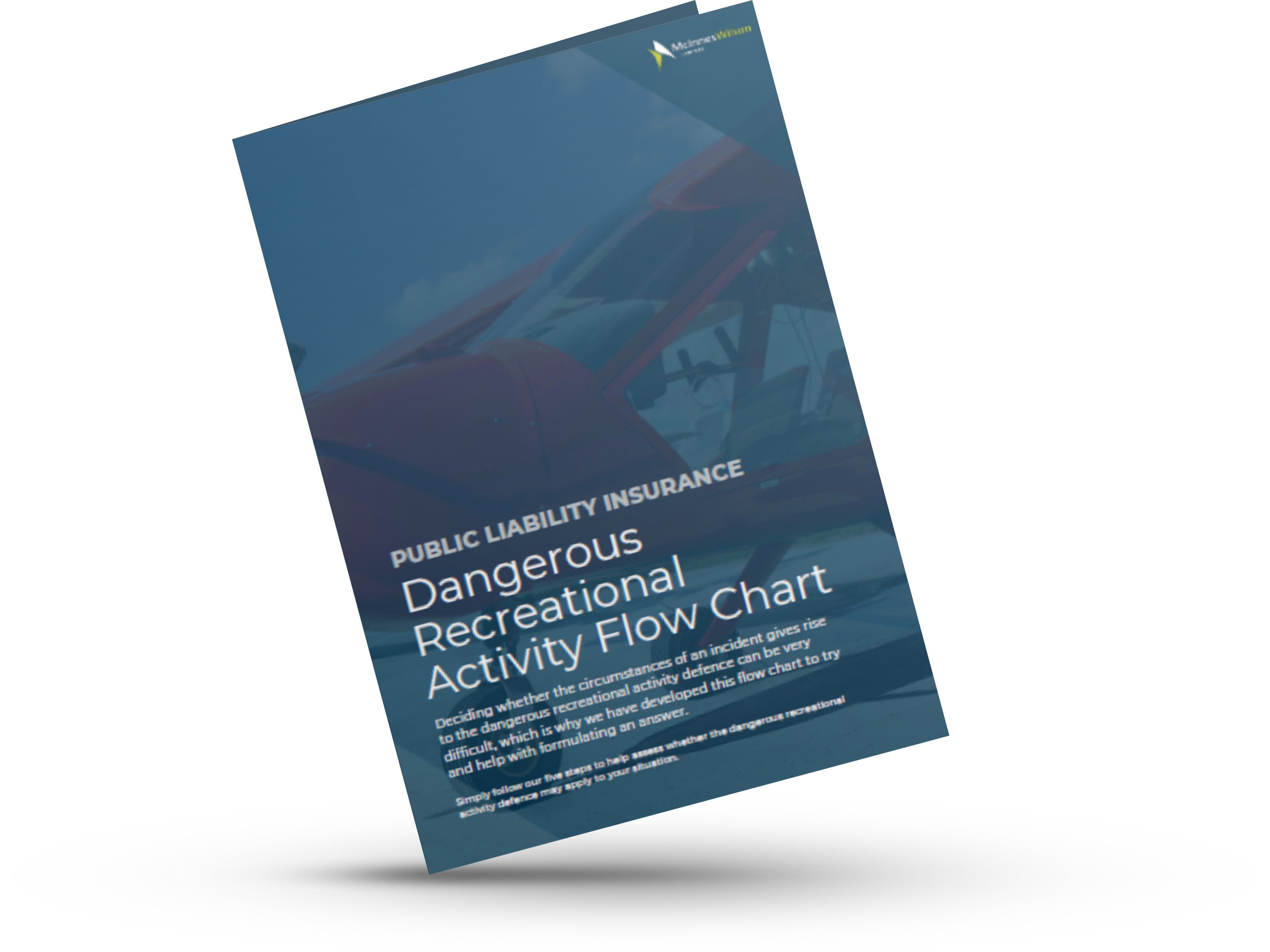The NSW Court of Appeal has recently handed down its decision of Cox v Mid-Coast Council [2021] NSWCA 190.
What happened?
In tragic circumstances, the Appellant (Mr Cox) was flying a light plane and had attempted to land unsuccessfully at the Old Bar Aircraft Landing Area. In the process of climbing away from the grass airstrip, he struck a Ferris Wheel positioned at the end of the airstrip.
It was accepted that the Ferris Wheel was positioned within the “splay” area past the end of the runway, which is effectively a three-dimensional space extending past the runway through which an aircraft may travel when taking off and landing (it is effectively a buffer to allow for the difficulties that can be encountered in approaching and taking off from a runway dead straight).
The Ferris Wheel had been erected only two days prior to the incident as part of the Old Bar Festival. It was accepted that the Council did not decide on the location of the Ferris Wheel, though it was aware of its location. Further, as the Council had the care, control and management of the airfield at the time, it was accepted that it was aware that aircraft would be taking off and landing at the airstrip whilst the festival was being conducted.
Just reciting those facts certainly suggests that the Council was liable and, indeed, that was the finding at the trial that was run by a young woman who was riding on the Ferris Wheel and was injured when the plane collided with it. That woman sued Mr Cox as well as the Council, and the Court found that both were negligent and apportioned blame 65% to the Council and 35% to Mr Cox. However, in the action brought by Mr Cox, the Council could and did raise the defence of dangerous recreational activity under section 5L of the Civil Liability Act 2002 (NSW).
At First Instance
The Trial Judge accepted that the activity that Mr Cox was engaged in (flying the plane with a recreational licence for his own enjoyment, relaxation or leisure (as he wasn’t being paid)) was a dangerous recreational activity. The obvious risk of harm associated with that dangerous recreational activity was a collision occurring as a result of an obstruction in the flight path or possible flight path of an aircraft during take-off or landing.
Critical to the reasoning here was the fact that the Old Bar aircraft landing area was not a licenced aerodrome subject to regulatory oversight or control by the Civil Aviation Safety Authority (CASA) such that it was not monitored or staffed by air traffic control personnel and was also not required to comply with any legal requirements established by the Civil Aviation Regulation or other laws regulating landing areas used by aircraft. It was accepted that if the airfield did have to comply with those regulations or laws, then the splay area at the end of the runway ought to have been kept free of obstacles. However, interestingly, the Court was also guided by the experts that had provided a joint conclave report stipulating that whilst it was reasonable for a pilot to expect that the splay area will be free of obstacles, it was ultimately the responsibility of the pilot to ensure that this was the case.
On Appeal
Mr Cox sought to appeal the trial decision on the basis that:
- He was not engaged in a dangerous recreational activity; and
- The Trial Judge failed to correctly identify the risk of harm in finding that Mr Cox colliding with the Ferris wheel within the splay area was an obvious risk.
The Court of Appeal upheld the Trial Judge’s decision and, consistent with the recent authorities of Menz v Wagga Wagga Show Society Inc [2020] NSWCA 65 and Singh v Lynch [2020] NSWCA 152, reiterated that identifying the risk which materialised with precision was not the exercise intended by the CLA. Rather, the risk must be expressed at a level of generality.
The crux of Mr Cox’s argument was that the positioning of the Ferris Wheel within the splay area was not within the parameters of what he (or a reasonable person in his position) would ordinarily expect to encounter when piloting an aircraft.
The Court of Appeal primarily relied on the following in finding that the risk of harm was an obvious risk:
- The fact that the subject airstrip was an unattended area not subject to regulatory oversight or control, which bears further on the likelihood of hazards being encountered during take-off and landing from the airstrip; and
- The fact that Mr Cox knew that the purpose of a flyover was to detect obstacles in and around the airfield, but that nothing was said about the observability of the Ferris wheel during that flyover, such that it seems the Court accepted that he did not detect it and came back to the fact that it was Mr Cox’s own responsibility to determine the safety or otherwise of the landing/take-off area.
Accordingly, despite the outcome in the other related matter, here the Council escaped liability for Mr Cox’s injuries (and the potential for a damages bill of just over $900,000.00) on the basis that he was engaged in a dangerous recreational activity by flying the plane at the time, and colliding with the Ferris wheel (an obstacle) in the splay area was the materialisation of an obvious risk. The Court of Appeal accepted that although the risk may have had a low probability of occurring, that did not affect the characterisation of it being obvious.
Take-Aways
As is usually the case with these types of decisions, it is very fact-specific and, although it confirms that flying a plane purely for leisure will constitute a dangerous recreational activity, the materialisation of the obvious risk will depend entirely on the circumstances.
We think that the outcome would have been different here had the airfield been staffed by air traffic controllers and the existence of the Ferris Wheel in the splay area not detected. It seems clear that the fact that the airfield was unmanned meant that there was more of an onus on Mr Cox as the pilot to ensure that he had detected all hazards before attempting to land.
Whilst one might think that a Ferris Wheel is something that would be obviously seen, it should be kept in mind that Mr Cox’s vantage point here was from 1,500 feet above and the Ferris wheel such that it may not have seemed as obvious from there. From that perspective, we certainly have some sympathy for Mr Cox here, but the analysis of the Court of Appeal cannot be faulted.
Principal

